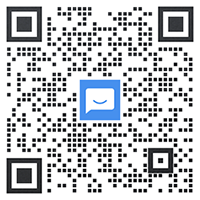Miaozhen Systems: 31.9% digital ad traffic was invalid in 2019

Leading marketing measurement and business intelligence solutions provider Miaozhen Systems has released China Digital Advertising Invalid Traffic Report in 2019 , and found that invalid traffic (IVT) accounted for31.9% of China’s total digital advertising traffic in 2019,up 1.7 pp from 30.2% in 2018. Based on online advertising data measured by Miaozhen Systems throughout the year, IVT cost the China brand advertising market an estimated 28.4 bil RMB in 2019, at the same time, Miaozhen Systems’ IVT filtration solutions saved advertisers an estimated 4.5 bil RMB.
The report analyzed data from 65k campaigns by 2k brands across 1.2k platforms from Jan 1 2019 to Dec 31 2019. Platforms measured included PC, mobile, and NEW TV. Brands were from FMCG, baby & mom, auto, finance, IT, and other industries. Ad formats included OTV ads, display ads, news feed ads, launch splash screen ads, text hyperlink ads, video pause ads, corner ads, in-video ads, rich media ads, character sketch ads, show host promotional messages, title sponsor graphics, and more. Marketing and media types included online media, offline media, owned media, social media, KOLs, etc. Key findings for 2019 are summarized below:
- Invalid traffic (IVT) made up 31.9% of all digital advertising traffic in China, up 1.7pp from 2018;
- 39.9% of vertical media traffic was invalid; IT verticals had the highest IVT rate at 49%, up 14pp from 2018;
- Across industries, internet and communications saw the greatest IVT increase (up 6.3pp from 2018) and suffered the highest IVT rate;
- 10% of NEW TV ad traffic was invalid; agencies contributed the most invalid exposure;
- 26% of all online consumer sales leads were invalid, with major implications for auto and other industries that rely on online lead collection;
- 4.2% of outdoor advertising was invalid or not displayed;
- 48% of social media advertising traffic was invalid. On average, 57.5% of KOL fans were invalid, with baby & mom KOLs having the highest rate of invalid fans (65.1%).
31.9% of 2019 digital ad traffic was invalid, up 1.7pp from 2018
Data from AdMonitor by Miaozhen Systems indicate that in 2019, 31.9% of online advertising traffic including PC & Mobile in China was invalid, up 1.7 pp from 30.2% in 2018. Invalid exposure for display ads dropped in 2019 compared to 2018, but still made up over 40%. Invalid exposure increased in video ads, reaching 22.6% this year.

Nearly 40% of vertical media exposure was invalid;IT verticals had more invalid exposure than other verticals
Vertical media had more invalid exposure than other media types in 2019, up 0.2 points from 2018. Affiliate ad networks and portal/news sites had the second and third highest invalid exposure rates (31.5% and 31.1% respectively), down from last year. Video sites saw the largest jump (7.6 points) from last year despite having a lower rate overall.

Over 30% of exposure was invalid on travel, fashion news, auto, baby & mom, IT, and finance verticals. IT verticals had the highest invalid exposure rate among all verticals(49%), suffering a surge of 14 points from last year.
Internet & communications industry had the most invalid exposure and clicks in 2019.
The invalid exposure rate in the internet & communications industry was up 6.3 points (from 33.5% in 2018 to 39.8% in 2019), higher than all other industries. Construction & real estate had the second-highest rate of 39.5%.

10% of NEW TV ad traffic was invalid in 2019;Agencies contributed the most invalid exposure
Miaozhen Systems’ report, “Online Advertising Traffic in China 2019”, shows that as of 2019 Q3, NEW TV’s advertising traffic share had overtaken PC. With NEW TV now the second-largest entry for online advertising, combating IVT on this platform has also become increasingly important. The report indicates that 10% of NEW TV traffic was invalid in 2019. By type of media, agencies contribute the most invalid exposure (26.4%) followed by hardware manufacturers (24.2%).

Over 1/4 of sales leads on websites was invalid in 2019;lifestyle platforms generated the most invalid leads in auto industry
According to Miaozhen Systems' SiteMonitor data, 26% of leads generated in 2019 on measured websites were invalid. Auto industry mainly acquired leads from auto verticals, news sites, lifestyle platforms, travel platforms, search engines, and portal sites. Auto verticals generated the most leads (33.8%), 18.2% of which were invalid. Lifestyle service platforms generated 16.8% of leads, 34.0% of which were invalid.

Over 4% of outdoor ads were invalidly displayed in 2019
4.2% of outdoor ads measured by Miaozhen Systems in 2019 were invalidly displayed. Building poster ads and outdoor billboards were most frequently invalidly displayed (6.2% and 5.7%, respectively).Building posters were most likely to not be displayed (4.5%). Building LCD screen ads were most likely to have other invalidity issues (2.8%). Overall, outdoor billboards were more likely to be invalidly displayed, not displayed, or have other display issues.

Nearly half of social media traffic was invalid;58% of the average KOL’s fans were invalid
In addition to impacting online advertising, data fraud is also severe among social media and KOLs. According to data from Miaozhen Systems' SocialMaster and KOL systems, 48% of traffic on mainstream social media platforms was invalid in 2019. Furthermore, 57.5% of the average KOL’s fans were invalid. Baby & mom KOLs have more invalid fans (65.1%) than other types of KOLs.

Miaozhen Systems strives to build a healthy digital marketing ecosystem; IVT filtration solutions reduced clients’ IVT rate to 4.7%
The China digital marketing industry has formed a consensus to work together to combat IVT and data fraud. As the leading omni-measurement and business intelligence and analytics solutions provider, Miaozhen Systems has been dedicated since 2013 to making the China advertising and marketing industry healthier and more transparent. In addition to developing innovative technologies and products, as a core member of Mobile Marketing Association (MMA), Miaozhen Systems has contributed to multiple white papers. It also works closely with the China Advertising Association (CAA) in order to promote transparency and verifiability in China digital advertising and create a trustworthy, win-win ecosystem.
In 2019, to protect advertisers against increasingly organized and intelligent advertising fraud, Miaozhen Systems completely upgraded its IVT filtration solution SmartVerify with improved algorithms, rules, and data. The all-new SmartVerify is built around a Turing identification engine and uses AI algorithms to intelligently filtrate IVT. Only 4.7% of post-campaign verified traffic was invalid for the average SmartVerify client—far lower than the 2019 industry average of 31.9%

Miaozhen Systems’ KOL evaluation and selection solution also completely upgraded in 2019. With its redesigned filtration models that use machine learning to analyze user relationships, interaction settings, logic of posts, and characteristics of fraudulent accounts, the new system is more effective than ever at identifying and eliminating fraud.
Miaozhen Systems is committed to using mature, innovative technologies and products to promote healthy growth and transparency in China digital marketing industry. It protects advertisers by ensuring its data conforms to China Advertising Association, Media Rating Council, Mobile Marketing Association China, China Media Assessment Council, and other global and national industry standards. In addition to more traditional digital advertising, Miaozhen Systems is also active in the offline advertising and social media/KOL marketing fields. It aims to work hand in hand with industry partners to standardize the industry and combat behaviors that harm it. Together, the industry can create a healthier, more transparent and vibrant digital marketing ecosystem.
This article presents a selection of the report’s findings.
To read the full report,
please scan the QR code below,
or tap“Read More”.








